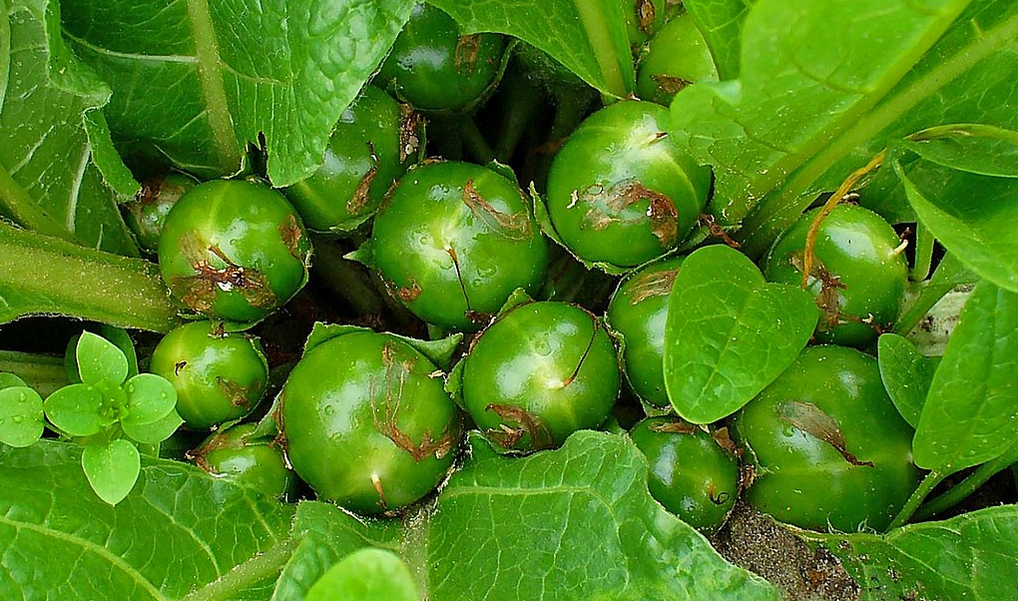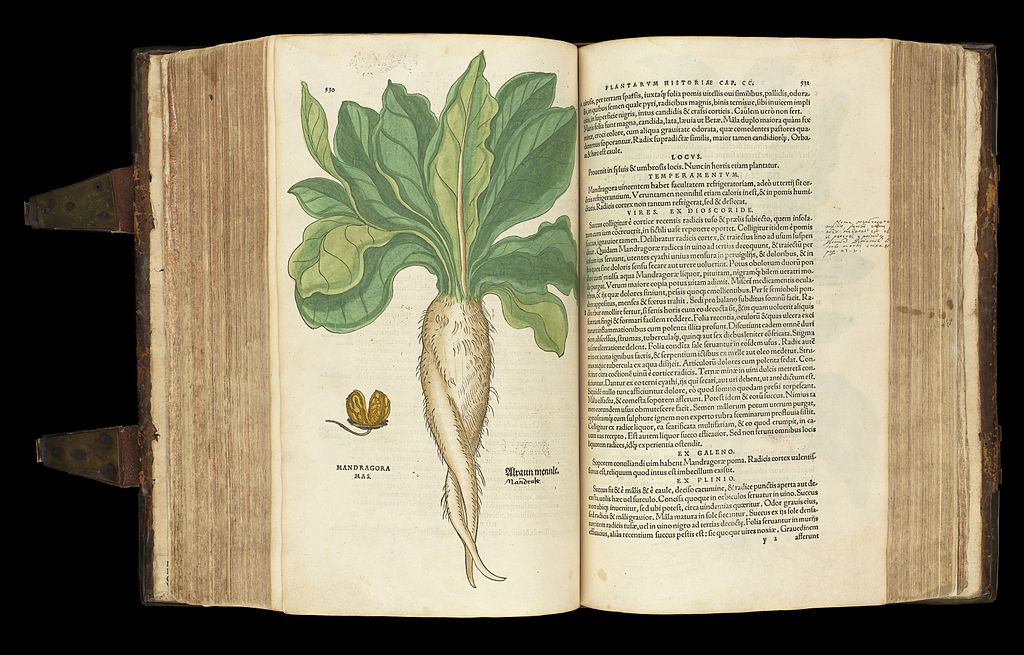Unveiling the Mysteries of Mandrake
From Folklore to Herbal Folk Medicine — For centuries, Mandrake has been relied upon for addressing various health issues, from sleep problems and discomfort during urination to pain relief, dental woes, and even emotional struggles like sadness or depression.
Interestingly, recent lab studies have confirmed that extracts from Mandrake possess some intriguing natural powers.
With a nod to Halloween, we’re introducing you to Mandrake…
All Hallows’ Eve, or Halloween, is a contraction of All Saints’ Eve, a holiday celebrated on October 31, the evening before All Saints’ Day. The festival begins the three-day Allhallowtide season, which ends on All Souls’ Day, and occurs the day before the Western Christian feast of All Saints. [Source]

H. Zell, CC BY-SA 3.0, via Wikimedia Commons
Mandrake Folklore to Folk Medicine
Scientists found that these plant extracts hold qualities that can act as antioxidants, which protect the body from damage caused by harmful molecules.
They also influence the immune system and may control certain enzymes in our bodies.
What’s fascinating is the variety of chemical components found in Mandrake.
These include alkaloids like atropine and scopolamine, which are known for their effects on our nervous system and other compounds.
What makes these compounds stand out is their potential impact on our bodies.
Some have been recognized for their ability to help with:
- nerve-related issues
- working as antidepressants
- managing inflammation
While this is all really interesting, it’s essential to understand that these effects have mainly been observed in lab settings so far. This means further research is needed to see how these findings might translate to helping people in real-life situations. Particularly, more studies with living organisms (in vivo studies) are required to better understand how Mandrake might truly work in our bodies.
Another critical point to note is safety.
While Mandrake shows promise, it also contains components that can be harmful. So, extensive research is needed to make sure it can be used safely for medical purposes.
In essence, while there’s a lot of potential in Mandrake for various health issues based on what we’ve seen in the lab, more research and testing are needed to make sure it’s safe and effective for real-life use.
Note: For the scientific information that inspired the above part of this post, see this abstract.
Mandrake from Folklore to Folk Medicine
In the heart of folklore (and now in the mystique of Halloween) lies the captivating lore surrounding Mandrake, a plant steeped in ancient beliefs, enigmatic rituals, and eerie superstitions.
Embark on a journey with us to explore the intricate tapestry of legends and tales that have woven Mandrake into the fabric of history, myth, and magic.
Botanical Profile:
Mandrake (Mandragora officinarum) stands as a botanical wonder, boasting dark green leaves and alluring bell-shaped flowers. But it is the root, often bifurcated and curiously resembling a human figure, that has inspired centuries of superstition and awe.

See page for author, CC BY 4.0, via Wikimedia Commons
Mandrake from Folklore to Folk Medicine
Historical Significance:
The history of Mandrake intertwines with diverse cultures and civilizations, each attributing mystical qualities to this peculiar plant.
Ancient Greeks and Romans believed in its magical properties, associating it with love, fertility, and protection against evil spirits.
Legends tell of the Mandrake root emitting a shriek when uprooted, a sound that brought misfortune or even death to the unfortunate soul who disturbed its slumber.
Medicinal Uses:
In ancient times, Mandrake played a role in herbal medicine, revered for its purported healing properties.
It was used as an anesthetic for surgical procedures and as a sedative.
However, due to its potent alkaloids, ingestion of any part of the plant could lead to poisoning. Its historical medicinal applications have waned in modern times due to the recognition of its toxicity.
Cultural References:
Mandrake’s enigmatic presence extends beyond ancient lore. It finds mention in literary works, religious texts, and modern popular culture.
Biblical references to Mandrake tie it to connotations of love and fertility.
In more recent times, it has found a place in fantasy literature, such as the compelling portrayal in J.K. Rowling’s Harry Potter series, further cementing its association with magic and mystery.
Folklore:
Folklore surrounding Mandrake is an intricate tapestry of myths and beliefs. It was believed to grow under the gallows of hanged criminals or in places where the ‘seed’ of a hanged man fell, attributing to its eerie human-like appearance.
Legends suggest it was harvested at midnight on certain days, with rituals to mitigate the potential harm caused by its unearthly scream.
Harvesting and Safety:
The folklore surrounding Mandrake’s scream upon being uprooted adds an air of caution and fear to its harvesting.
While modern sensibilities may dismiss these superstitions, the plant’s toxicity demands respect. The handling of Mandrake requires protective gear and adherence to safety protocols to avoid potential harm.
Modern Perspective:
In the contemporary world, Mandrake is regarded more as a cautionary tale than a remedy.
Due to its high toxicity, its use in herbal medicine is severely limited.
Regulations caution against its use, and scientific understanding emphasizes its potential dangers rather than its benefits.
All in all…
Mandrake, with its deep roots in folklore and superstition, remains a captivating emblem of ancient beliefs and mystical allure.
As we immerse ourselves in its rich tapestry of legends during the Halloween season, let us heed the cautionary tales and learn from the history of this bewitching herb.
Exploring the folklore surrounding Mandrake not only unravels the mysteries of the past but also reminds us of the vital importance of safety and scientific understanding in herbal remedies.
